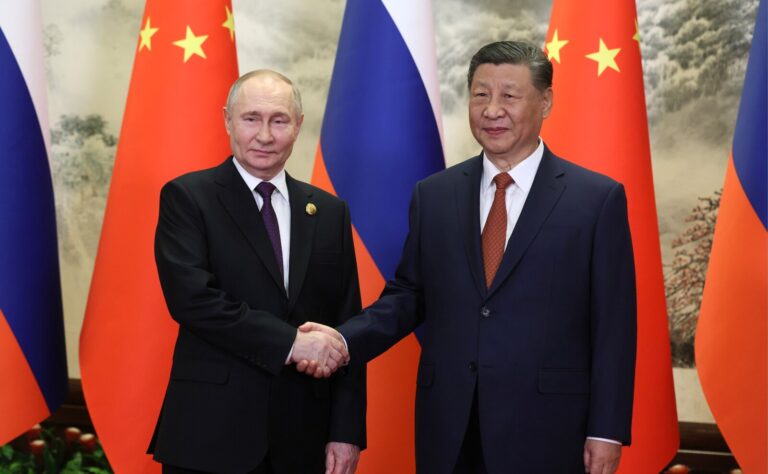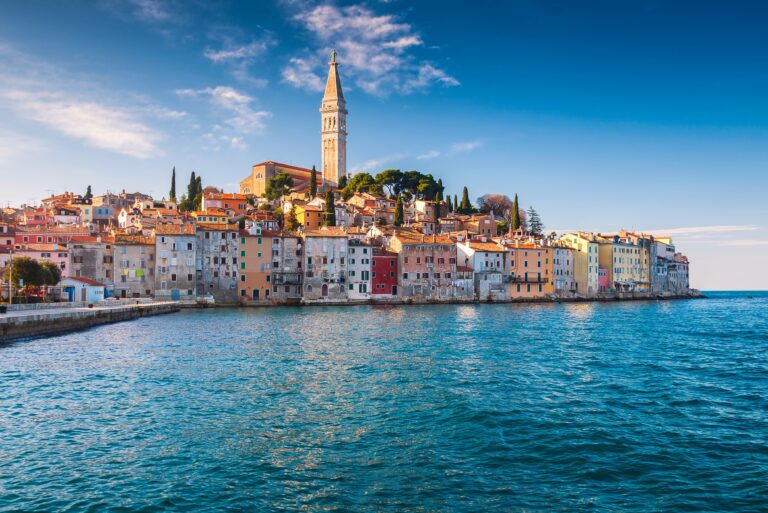
The article is published as part of a joint issue “Green Synergies: Sustainability, Security, and Taiwan-Europe Collaboration” between CHOICE and the University of Nottingham’s Taiwan Insight.
The European Union finds itself caught between new dependencies – on US LNG and Chinese clean tech. The Visegrád Four (V4) countries stand out as both highly exposed to these pressures and well-positioned to seize the opportunities from the ongoing green transition. Taiwan is navigating its own energy transformation while striving to maintain a technological edge amid growing geopolitical tensions and shifting supply chains, opening doors for potential V4-Taiwan collaboration.
Europe’s Energy and Industrial Shock
The Covid-19 pandemic, Russian war against Ukraine, and the subsequent energy crisis in Europe have profoundly reshaped global industrial strategies, accelerating the shift toward green industrial policies. These interconnected crises exposed critical supply chain vulnerabilities – particularly the EU’s reliance on fossil fuel imports – and forced policymakers to prioritize energy security, supply chain resilience, and strategic autonomy.
In response to Russia’s aggression, the EU moved swiftly to reduce its dependence on Russian oil and gas, adding 71 billion cubic meters of LNG capacity, concentrated mainly in Germany, the Netherlands, Italy, France, and Finland. The United States became the EU’s primary LNG supplier, accounting for 45 percent of its imports. Trump’s return, however, has turned US gas into a political tool, raising concerns that energy access could be leveraged in broader trade disputes.
Meanwhile, Europe’s decarbonization ambitions have created a strategic dependency on China. Today, China produces 80 percent of solar panels, 62 percent of wind turbines, 75 percent of batteries and 70 percent of electric vehicles. It is the world’s leading processor of critical raw materials, such as lithium, cobalt, nickel, and graphite. As a result, Europe’s energy transition hinges on two (unpredictable) external partners: the US and China.
These risks are further compounded by Europe’s energy price disadvantage, which undermines its competitiveness. In 2023, electricity prices in the EU were 158 percent higher and gas prices 345 percent higher than in the US. Under Europe’s energy pricing model, gas was the price-setter 63 percent of the time despite accounting for only 20 percent of the energy mix, driving up electricity costs. One-third of the EU’s LNG contracts are also based on spot prices, which adds to the existing volatility. Fragmentation across EU energy markets also means that prices can vary threefold between individual member states.
EU Policy Response: Strategic Autonomy
To counter Chinese clean tech overcapacity, the EU has ramped up protective trade measures, alongside subsidies to stimulate domestic industry. New initiatives aim to boost resilience, reduce dependencies on critical materials, goods, and technologies, and diversify trade relations – including with partners in the Indo-Pacific region. With the global market for clean technologies set to rise from $700 billion in 2023 to $2 trillion in 2035, this is increasingly viewed not only as a climate or energy policy but also as a major economic opportunity.
The Net-Zero Industry Act aims for 40 percent of the EU’s clean tech demand to be met domestically by 2030. Similarly, the Critical Raw Materials Act mandates that at least 10 percent of the EU’s consumption is met by domestic extraction, 40 percent by processing, and 25 percent by recycling, while limiting dependence on any single supplier of critical materials at 65 percent. The Battery Regulation introduces recycling targets, such as recovering 80 percent of lithium from waste batteries by 2031, reducing the need for imported raw materials. These efforts will also soon be complemented by the first Clean Trade and Investment Partnerships and the Circular Economy Act, which is expected in 2026.
V4’s Dual Challenge of Decarbonization and Energy Security
Against this backdrop, the V4 – Czechia, Hungary, Poland, and Slovakia – face significant challenges. With manufacturing accounting for around 20 percent of GDP, they are among the EU’s most industrialized and energy-intensive economies. For instance, in Czechia and Slovakia, employment in energy-intensive sectors is more than double the EU average. Moreover, their energy systems remain highly dependent on fossil fuels, which puts them in a difficult position as they try to balance the pursuit of energy self-sufficiency with the need to decarbonize. Even though the whole region was hit hard by the energy crisis in 2022-2023, some countries were able to cope better than others. Czechia and Poland continue to have some of the highest electricity prices in the EU, while Slovakia and Hungary benefit from prices that are 2-3 times cheaper.
V4 countries also lag behind in renewable energy deployment, with Czechia generating 16 percent from renewables, Slovakia 23 percent and Hungary and Poland 31 percent, compared to the EU average of 47 percent in 2024. Instead, most V4 countries rely on nuclear-generated electricity, with a 62 percent share in Slovakia, 39 percent in Hungary, and 34 percent in Czechia. Poland is the only V4 country without a nuclear power plant, though it plans to join the group in the coming years. While still heavily reliant on coal, its share in the Polish energy generation mix has dropped from 70 percent in 2023 to 54 percent in 2024.
Despite these challenges, the V4’s strong industrial base and skilled workforce position it well to benefit from the green transition. Poland and Hungary have become major players in battery production, with significant investments from LG Energy Solution, SK Innovation, CATL, Samsung and others. Poland, Czechia, and Slovakia are emerging as hubs for wind energy components and heat pumps. Some investments, however, provide a cautionary tale. The Hungarian government has actively courted Chinese investment, creating jobs with limited added value in the long run and raising concerns about the country’s overexposure to Chinese technology.
Taiwan’s Clean Energy Transition and Strategic Positioning
While the V4 is navigating its own energy and industrial recalibration, Taiwan faces a parallel set of pressures – albeit shaped by different geopolitical dynamics. Despite its 20 percent renewable target for 2025, Taiwan’s energy sector remains dependent on coal (42 percent) and natural gas (40 percent). By 2030, the government plans a 50-30-20 energy mix of gas, renewables, and coal. Taiwan’s national power utility company, Taipower, is also preparing to upgrade the electricity grid to meet growing energy demand, aiming for 60-70 percent renewables by 2050.
As in the case of the V4, Taiwan’s reliance on imported fossil fuels makes energy diversification both an economic and security imperative. One of Taiwan’s flagship initiatives is the Taiwan Innovative Green Economy Roadmap (TIGER), developed in collaboration with the MIT Energy Initiative. Through TIGER, Taiwan’s leading companies are developing strategies for sustainable energy security, exploring advanced technologies, assessing economic impacts of decarbonization, and identifying effective policy tools to support the transition.
Taiwan’s economic security concerns, however, extend beyond energy. The island has long been a flashpoint in the US-China rivalry. China pursues a strategic campaign to undermine Taiwan’s leadership in the global semiconductor industry while investing in its domestic chip production. At the same time, Beijing has increased its diplomatic and military pressure on Taiwan, seeking to isolate the island on the international stage. Taiwan’s ‘Silicon Shield’ could also be eroded by US policies aimed at on-shoring semiconductor production, which led to TSMC’s decision to expand its US investment to an unprecedented level of $100 billion.
Consequently, Taiwan must cultivate strategic partnerships, maintain key technological research within its territory, and prevent technology leakage to its rivals. In this context, Taiwan increasingly recognizes the importance of building alliances with other democratic and industrial partners, such as Japan, South Korea, and Singapore. Taipei also sees growing potential to forge strategic partnerships in Europe that could help safeguard its economic and technological leadership.
Can Taiwan and the V4 Turn Potential into Partnership?
Among Taiwan’s emerging European partners, the V4 stand out for their industrial capacity, skilled workforce, and growing role within the EU value chains. Taiwan has recently supported the creation of a semiconductor research center in Brno, which is the third such center in the Czech Republic, strengthening academic research and creating new opportunities for industry-led innovation and technology transfer. This, however, falls short of the original ambition – a TSMC semiconductor factory, which ultimately went to Dresden, Germany – just 50 kilometers from the Czech border.
Slovakia is also deepening its own cooperation with Taiwan on semiconductors. Taiwan’s investment fund, Taiwania Capital, has invested in Slovak company Sensoneo, which specializes in smart solutions for waste management and circular economy. In 2023, Taiwan also began consultations with Slovakia on joint electromobility strategies and launched a dialogue on hydrogen production, storage, and distribution in Poland. Meanwhile, Hungary presents a paradox. Despite its close political alignment with China, it remains a major destination for Taiwanese firms in electronics, automotive, and smart manufacturing. Taiwanese companies continue to expand their presence in Hungary, attracted by its industrial capacity and access to the EU market, even as official diplomatic relations remain minimal.
For Taiwan, deepening cooperation with the V4 could help reduce its dependence on China and integrate itself into a more diversified, resilient supply chain system with Europe and other allies increasingly promoting a ‘China-free’ model in strategic sectors like semiconductors, batteries, AI, and clean technologies. For their part, the V4 countries could gain valuable access to Taiwan’s technological expertise, capital, and international market networks.
Yet shifting priorities have cast doubt on Taiwan’s long-term commitment to the region. Past investment plans have underdelivered, and with growing focus on the United States, questions remain about whether enough financial and political capital will be available to deepen ties with Europe and the V4. As resources concentrate in larger economies, there is a real risk that smaller but strategically important partners like the V4 will be sidelined.
Written by
Filip Křenek
Filip Křenek is an analyst at EUROPEUM Institute for European Policy, focusing on the European economy, economic security, competitiveness, and climate. From 2018 to 2023, he worked at the European Commission in the Directorates General for Competition, International Trade, and Regional Development. He is also a James S. Denton Fellowship alumnus at the Centre for European Policy Analysis (CEPA) in Washington D.C.


